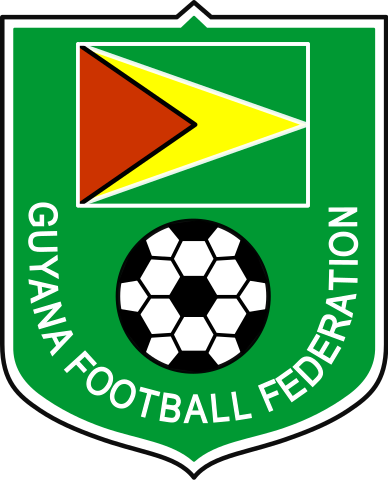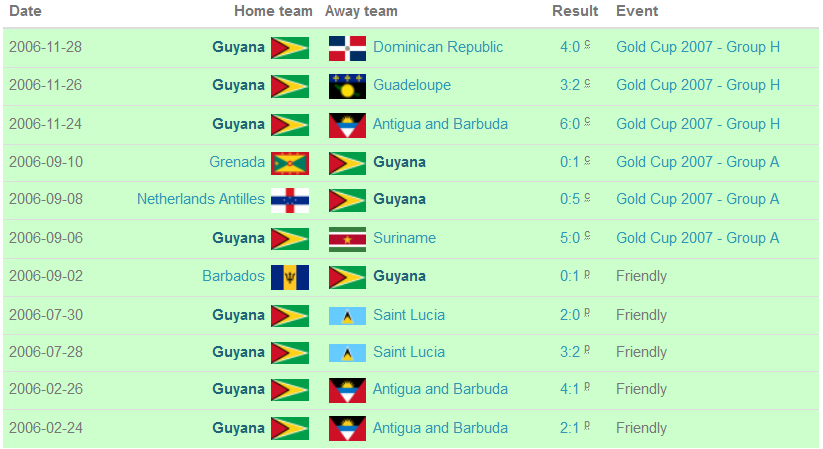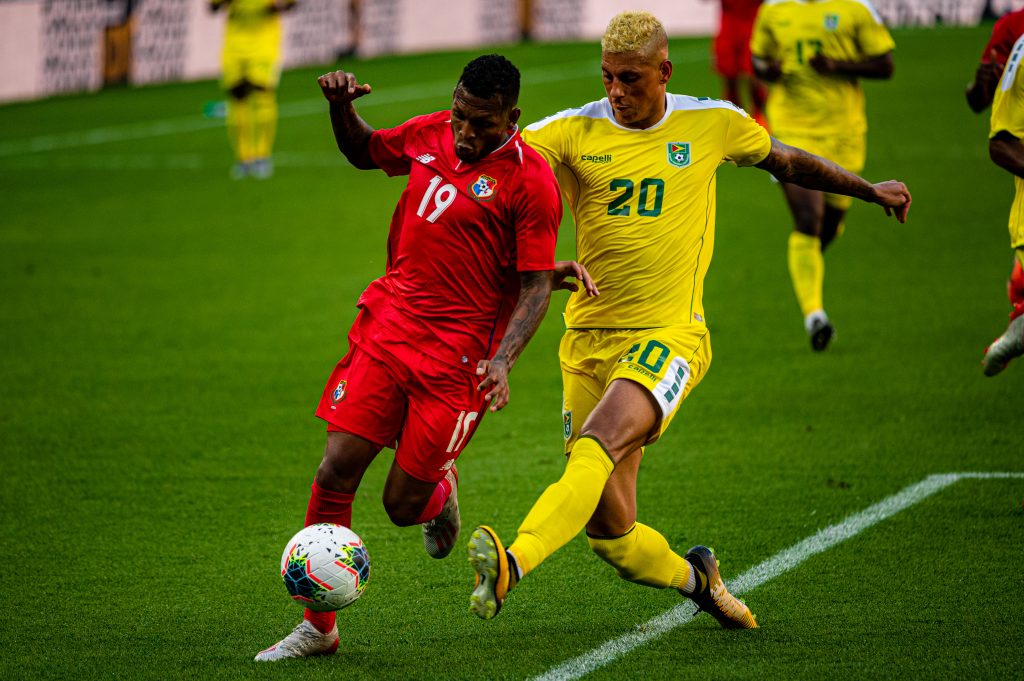When you think about South American football, you’d be forgiven to say that the first countries that probably come to mind are Brazil and Argentina. You’d probably think of Uruguay and Colombia too, but certainly not Guyana! Surrounded by, Venezuela, Brazil and Suriname. Guyana is one of South America’s least-visited countries but boasts an abundance of nature – including rainforests, hundreds of miles of beaches, rivers, waterfalls, you name it, you’ll find it all in Guyana!
So how does this tiny country fare on the football stage in the football-mad South American continent? Let’s find out…
History of Football in Guyana
Despite being insanely popular in most of South America, football actually plays second fiddle to cricket in Guyana. Football has been around in Guyana for a very long time! The Guyana Football Federation (GFF) was founded way back in 1902 but had to wait until 1961 to become affiliated with CONCACAF – the governing body of South American football. Seven years later they became full members of FIFA. The GFF are responsible for overseeing the Guyana national football team, as well as the country’s Elite League and First Division.
The Guyana national football team or their nickname the Golden Jaguars compete in the Caribbean Football Union of CONCACAF. Until the independence of Guyana in 1966, they competed under the name of British Guiana.
The first record of a football game in Guyana is back in 1905, a 4–1 defeat against fellow British colony Trinidad and Tobago. It was to be sixteen years before they played their next match, this time a away 2–1 win against neighbouring Suriname. Games were then sporadically played over the next few decades, with most of them coming against Trinidad and Tobago. Guyana were fairly competitive, with a mixed bag of wins and losses.
It took five years after gaining independence from the British in 1966 before Guyana took to the field again, this time sporting their new name. It was a two-legged affair against Suriname – they were beaten 7–3 on aggregate! It wasn’t until 1976 until Guyana competed in their first-ever World Cup qualifying campaign.
They were again drawn against a familiar foe – Suriname. The first leg was played in Georgetown, the capital city of Guyana. Guyana won the game 2-0 to take a commanding lead into the second leg away in Suriname. However, the second leg was a disaster! Guyana lost 3-0 on the night, meaning they crashed out 3-2 on aggregate!
How Are Guyana Faring in More Recent Times?
It’s been a mixed bag really. In 2006 they had a remarkable set of results which saw them rise up to 87th in the FIFA World Rankings. They recorded eleven successive wins, including five in the CONCACAF Gold Cup qualifiers.
In 2011, the second round of the World Cup qualifiers saw Guyana grouped alongside Barbados, Bermuda and Trinidad and Tobago, who were clear favourites for the group having qualified for the main finals in 2006 and giving England a run for their money! Against all odds, Guyana qualified from the group unbeaten! Unfortunately, they were eliminated in the next round, going down to much stronger opposition in Mexico, El Salvador and Costa Rica.
Things looked to be going well for Guyana, however, greed at the highest level took over. Despite making a large chunk of money from the reasonably successful qualifying campaign, it was reported that the players were only being paid $12USD a day. This of course enraged the players and they subsequently went on strike during the 2012 Caribbean Cup campaign. Guyana failed to even qualify for the tournament, due to a largely depleted team.
Football in Guyana stopped after this. Not a single game of football was played for the next two months. This hiatus led to FIFA removing the GFF as a member. Thankfully, Guyana were reinstated in 2015 and football could resume once more, after a new committee was put in place at the GFF.
These days they’ve been quite competitive, with help from recruited players who play for lower league English teams such as QPR, Newport County and Dagenham & Redbridge. Guyana qualified for the Gold Cup for the first time in 2019. They were drawn in a group with Trinidad and Tobago, Panama and hosts USA. In a very tough group, there wasn’t to be an upset on the cards this time. They lost to the States and Panama, before recording a draw against Trinidad and Tobago. This was a remarkable achievement for Guyana, and it was truly a testament to how far they had come since the dark days of not playing.
What About the Domestic Leagues?
As previously mentioned, Guyana has two main football leagues. The Elite League and the First Division. Both leagues were founded in 1990 as the ‘GFF National Super League’, which was renamed to the Elite League in 2015. The format of the league is pretty simple. In the 2019 edition, there were ten participating clubs, most of which were based in Georgetown. The teams only played each other once, with Fruta Conquerors FC coming out victorious after a rampant display. The Conquerors won all nine games, scoring 43 goals and only conceding 5! Incredible record.
The most successful club in Guyana is Alpha United FC. They’ve won the Elite League five times since 2009, including two Guyana cups. Alpha United made history for being the first Guyanese football team to qualify for the CONCACAF Champions League in 2011. They were drawn against Herediano of Costa Rica. They were thrashed 8–0 by the much stronger side in the first leg, before faring slightly better in the second leg. Alpha United took an early 2–0 lead before unfortunately conceded twice to settle for a 2–2 draw, 10-2 on aggregate.
Football in Guyana is definitely on the rise again, especially after a very encouraging Gold Cup campaign. With the 2022 World Cup qualifiers looming, Guyana will certainly be hoping to carry some momentum into the qualifying games. Who knows, we might even see the Golden Jaguars take to the field in Qatar?
YPT have been running tours to Guyana for a few years now. See Guyana for yourself and join us on our Guyanas tour! You can secure YOUR place now with a €50 deposit or you can take advantage of our Young Pioneer Tours Membership Program from as little as €60.









